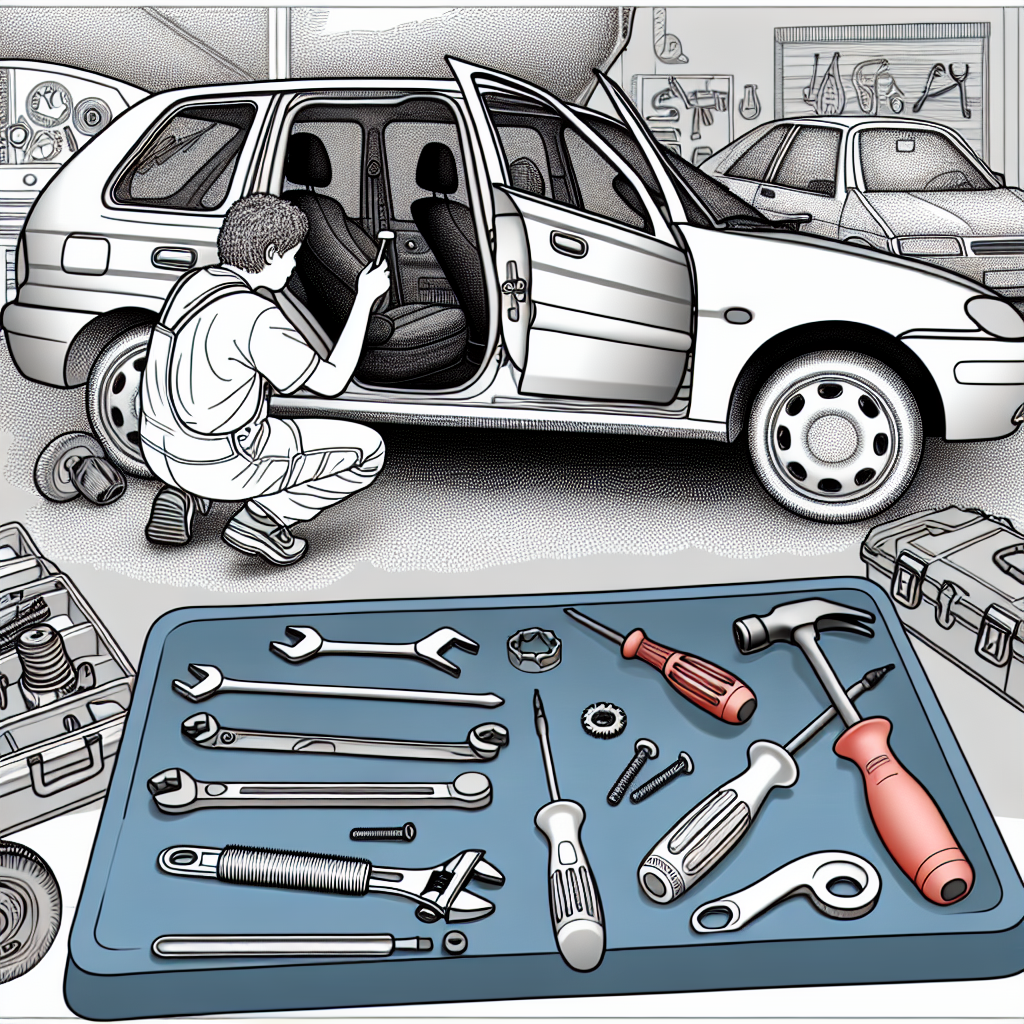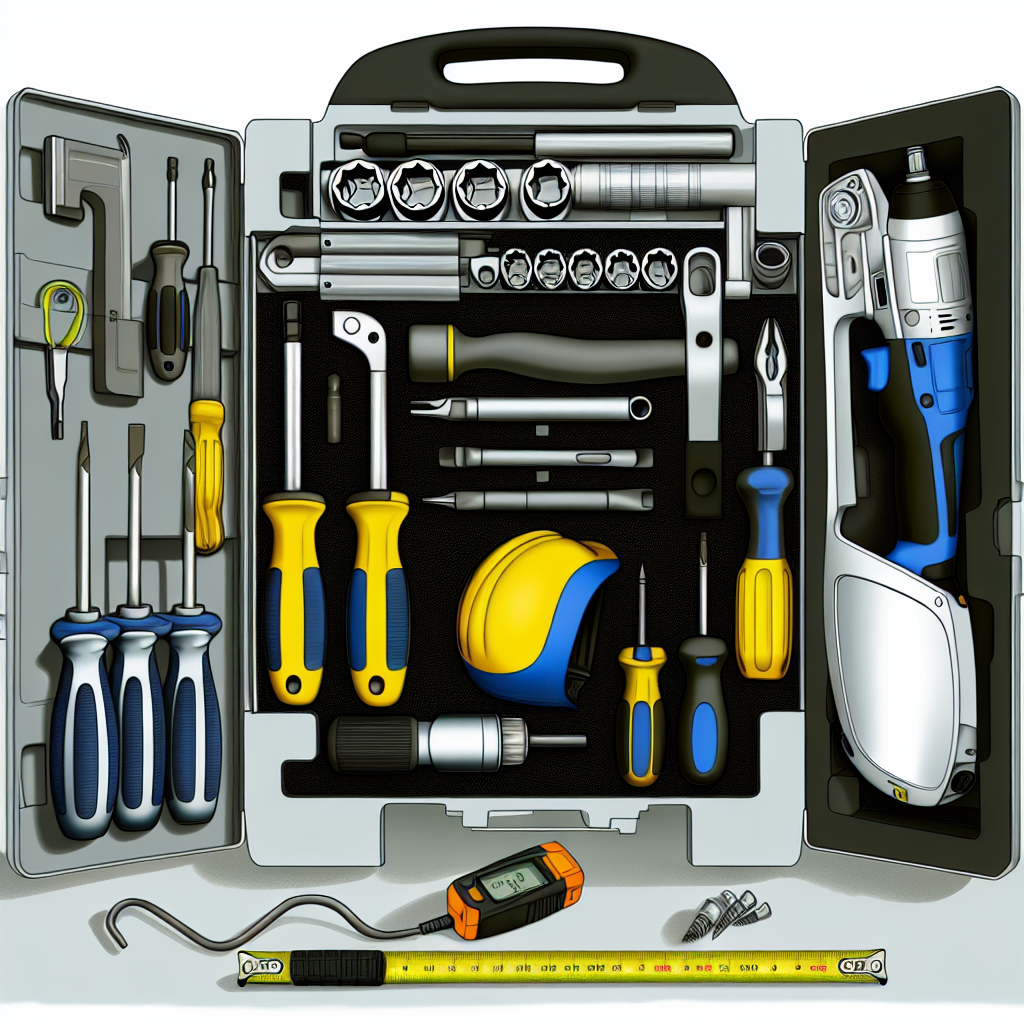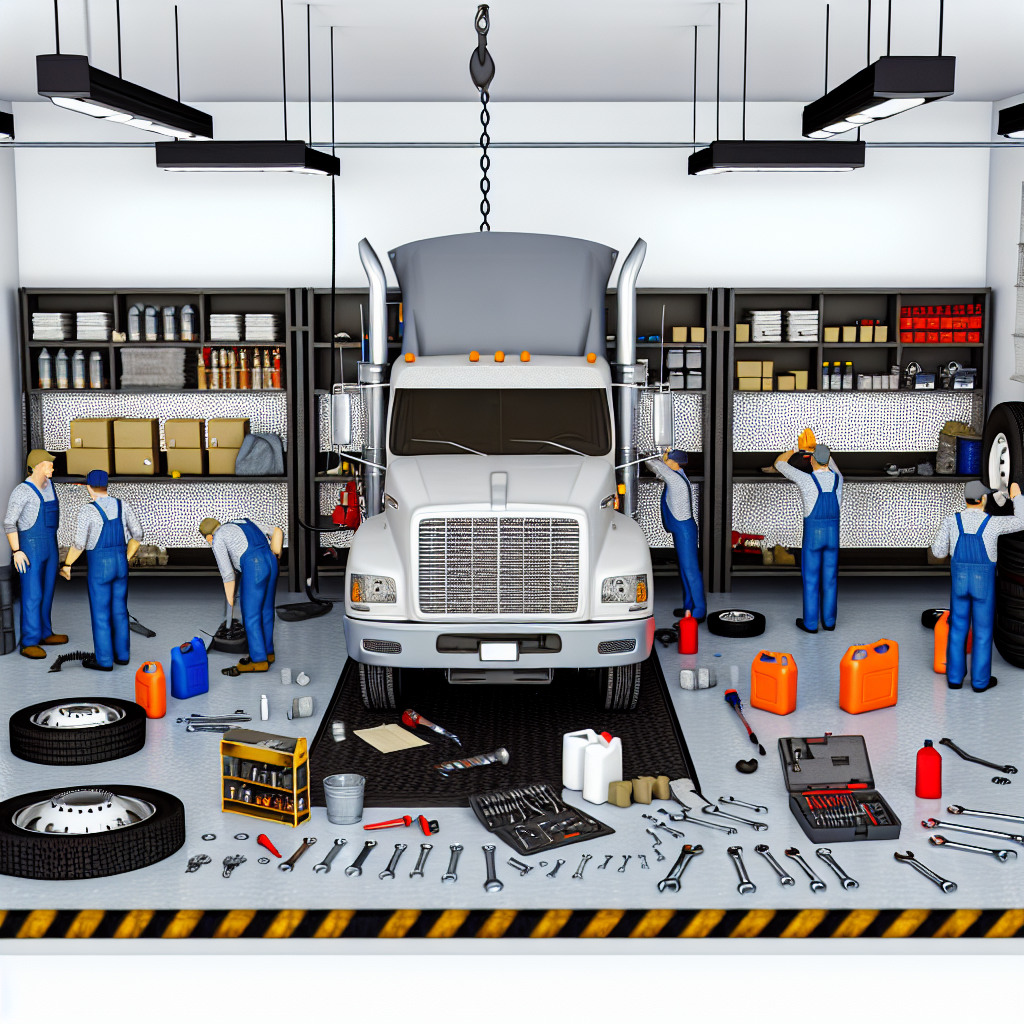When it comes to car repairs, the line between what seems simple and what can quickly spiral into a complex project is often blurred. Enter Tim Walz, the Governor of Minnesota, who took on a task many of us might find daunting: replacing a friend’s car door. In a lighthearted twist that showcases his practical skills, Walz sourced a replacement door from a salvage yard and embarked on an afternoon DIY adventure with some friends. His efforts culminated in a perfectly aligned BMW 3 Series door that not only looked professional but also functioned seamlessly—locking and shutting like a dream.
This experience raises a familiar question for car owners: is DIY car repair a rewarding challenge worth taking on, or should you leave it to the professionals? In this article, we’ll delve into the nuances of replacing car doors and panels, comparing the ease of undertaking DIY repairs against the complexities involved, all while sharing tips and insights from real-life experiences like Walz’s.


Benefits of DIY Car Repairs
Engaging in DIY car repairs comes with a myriad of advantages that can truly enhance one’s experience as a vehicle owner. Cost savings, personal satisfaction, and valuable learning opportunities are some of the most significant benefits.
Cost Savings
One of the most compelling reasons to embark on a DIY car repair project is the substantial financial savings. Professional repair shops often charge steep hourly rates, and even minor repairs can quickly escalate into substantial bills. By taking the matter into your own hands, as Governor Tim Walz did while replacing a friend’s BMW 3 Series door, you can efficiently cut down on these expenses. Walz sourced a door from a salvage yard, showcasing how creativity in sourcing parts can lead to impressive savings. As he quipped, “Saturday is for replacing your car door,” emphasizing how a little time and effort can alleviate the burden on your wallet.
Personal Satisfaction
Beyond the financial aspect, there is an incredible sense of fulfillment that comes from successfully completing a car repair on your own. Completing a DIY project gives you a feeling of accomplishment and boosts your confidence. After replacing the door, Walz shared that the final product was not only aligned perfectly but also functioned seamlessly: “Shuts like a dream. Windows work. Door locks work. Success.” Such a satisfying end result can motivate individuals to tackle even larger repair projects in the future.
Learning Opportunities
Take advantage of DIY repairs as a chance to learn and grow. Each project is an opportunity to gain practical skills and deepen your understanding of how vehicles work. The hands-on experience allows you to problem-solve in real-time, enhancing your troubleshooting abilities. Moreover, fixing your own car creates a better appreciation for the mechanical workings under the hood, putting you in a stronger position for any future car issues.
- Cost Savings: Reduce expenses by choosing DIY over professional repairs.
- Personal Satisfaction: Experience the joy and confidence that comes from completing a repair yourself.
- Learning Opportunities: Develop technical skills and a deeper understanding of vehicle mechanics through hands-on experience.
Walz’s effort to assist his friend by utilizing DIY techniques highlights the power of hands-on learning. It’s refreshing to see someone in a position of authority engage in a simple yet impactful task that not only helps a friend but also sets a positive example. DIY car repairs empower you to become more self-reliant and knowledgeable about your vehicle, transforming you into a more competent car owner.
In conclusion, whether you aim to save money, experience personal satisfaction, or expand your skill set, embracing DIY repairs can be incredibly rewarding. As evidenced by Walz’s adventure, the benefits extend far beyond the mechanics of the task at hand. With a little patience and resourcefulness, anyone can harness the joy of DIY car repair.
| Aspect | DIY Car Repairs | Professional Services |
|---|---|---|
| Cost | Generally lower; costs mainly for tools and parts | Higher; includes labor and convenience fees |
| Time Commitment | Varies; depends on skill level and complexity of repair | Predetermined; typically quicker but depends on the shop’s schedule |
| Potential Challenges | Requires self-assessment of skills, tools, and time; risk of making mistakes | Risks include miscommunication; can lead to added costs if additional repairs are needed |
Essential Tools for DIY Car Repairs
When it comes to DIY car repairs, especially for replacing car doors and panels, having the right tools is crucial. Below is a list of essential tools along with brief descriptions to enhance your understanding and ensure a successful repair.
-
Socket Set
A socket set is indispensable for removing and tightening various bolts and nuts in your car. Look for a set that includes both metric and standard sizes to accommodate most fasteners you will encounter. -
Screwdrivers
Different types of screwdrivers (flathead and Phillips) are necessary for removing screws from door panels and hinges. A set with various sizes will allow you to tackle different types of screws easily. -
Pry Bar
A pry bar is useful for separating the door from its frame and removing panel clips without damaging the surrounding area. It gives you the leverage needed for effective removal. -
Torque Wrench
A torque wrench ensures you apply the right amount of torque to bolts when reassembling. This tool is essential to avoid over-tightening or under-tightening, which can lead to issues later on. -
Impact Driver
An impact driver can make the job easier when removing stubborn screws that don’t budge. The tool provides extra torque to loosen screws that may be rusted or painted over. -
Safety Goggles
Safety should always come first. Wearing safety goggles protects your eyes from debris while working with tools and under the vehicle. -
Work Gloves
Gloves keep your hands protected from sharp edges and provide better grip while working. -
Lifting Equipment
Depending on your vehicle’s height, a hydraulic jack or ramps are necessary for lifting the vehicle safely to access the doors or panels underneath. -
Panel Removal Tool
This device is designed specifically for removing door panels and trim pieces without damaging them. It’s an excellent addition to your toolkit for any panel replacement. -
Tape Measure
A tape measure is valuable for measuring new parts and ensuring they fit correctly before installation.
By gathering these tools, you will be well-equipped to tackle DIY car repairs confidently and efficiently. Below is a visual representation of the essential tools for your reference.

Essential tools for DIY car repairs, displayed on a workbench.
When to Seek Professional Help
While DIY car repairs can be a fun and rewarding experience, there are several scenarios where it may be best to consult a professional mechanic instead. Understanding your limitations and recognizing the complexity of certain tasks is crucial in ensuring both your safety and the proper functioning of your vehicle.
Complex Mechanical Issues
Some repairs are more intricate than they seem at first glance. For instance, if a car’s electrical system is malfunctioning, attempting a DIY fix without the proper knowledge and tools can lead to worsening the problem. In Tim Walz’s case, if he had faced issues related to the vehicle’s wiring or internal electronics during his door replacement, seeking professional assistance would have been prudent to avoid potential complications that could arise from incorrect wiring.
Lack of Specific Tools
Certain repairs require specialized tools that most DIY enthusiasts do not have in their garage. Tasks such as balancing tires, aligning wheels, or removing heavy components often necessitate equipment only found in professional automotive shops. If Walz had needed to address an issue that required a hydraulic lift or advanced diagnostic tools, reaching out to a professional would have been the wiser option instead of trying to make do with standard tools and risking damage to the vehicle.
Safety Concerns
Safety should always be a top priority when undertaking car repairs. If a project involves lifting the vehicle or working in tight spaces, it can pose risks of accidents. In situations where there might be the chance of being injured, such as when handling heavy components or working with sharp tools, it is essential to defer to professionals. Notably, Walz’s lighthearted approach to replacing the door was feasible because it did not involve complicated safety issues. However, it is vital to recognize when a task exceeds the safety level one can handle.
Legal Regulations and Warranty Implications
Engaging in DIY repairs can potentially void a vehicle’s warranty, especially if the repairs affect critical systems. If Walz’s door replacement had compromised the vehicle’s warranty, he may have faced significant financial implications down the road due to covering repairs for issues arising from the DIY work. Car owners should also be aware of local regulations that govern car repairs, as some regions require certain repairs to be performed by licensed professionals.
In summary, while DIY car repairs can save money and offer a sense of community culled from friends helping friends, there are crucial moments when professional help is not just advisable but necessary. Whether due to the complexity of a repair, safety concerns, the need for specialized tools, or legal considerations, it is important to balance the DIY approach with the reality of one’s capabilities and the risks involved. Understanding when to call in a professional can lead to better repair outcomes and increased safety for everyone involved.
Governor Tim Walz’s Hands-On Car Repair
In September 2025, Minnesota Governor Tim Walz showcased his hands-on approach by personally replacing a damaged car door for a family friend named Essie. Essie’s BMW 3 Series had a dented right rear door. Instead of directing her to a body shop, Walz took on the repair himself.
Steps Taken:
- Acquiring a Replacement Door: Walz sourced a used door from a salvage yard at a low cost.
- Transferring Components: He removed the interior trim and electronics from the original door and installed them into the replacement.
- Installation: After preparing the replacement door, Walz installed it onto the vehicle, ensuring proper alignment and functionality.
Challenges Faced:
The primary challenge was ensuring that all electronic components and trim from the original door were correctly transferred and that the replacement door was properly aligned. Walz’s experience with vehicle maintenance facilitated this process.
Outcome:
The repair was successful. In a video shared on social media, Walz demonstrated the door’s smooth operation, stating, “Final product, perfectly aligned. Shuts like a dream. Windows work. Door locks work. Success.”
This incident highlights Governor Walz’s practical skills and willingness to assist friends with hands-on tasks.
In conclusion, our delve into DIY car repairs against professional services indeed opens the door to a world of unique experiences. As Governor Tim Walz illustrated through his hands-on effort in replacing a friend’s BMW door, there is immense value in taking on such challenges. Not only do DIY projects allow for cost savings and personal satisfaction, but they also foster connections with others—including friends and your vehicle, as Walz playfully demonstrated with his magic touch.
As one enthusiast reflected, “Fixing cars is not just a job, it’s a passion.” This captures the essence of why many of us engage in DIY projects. Each time you roll up your sleeves and tackle a repair, you potentially write a new story—much like how Walz turned what could have been a costly visit to a body shop into a memorable Saturday adventure. However, it’s crucial to acknowledge the challenges that can accompany these undertakings. Complex tasks, safety risks, and the need for specialized tools might at times warrant the expertise of a professional. Balancing your capabilities with the task at hand is essential when deciding whether to embrace a DIY spirit.
So, whether you discover joy in fixing a fender or prefer to rely on a skilled mechanic’s touch, what’s most important is that your car remains in good hands and that you find some joy along the journey. After all, life is too short not to enjoy the ride!
Frequently Asked Questions About DIY Car Repairs
1. What safety precautions should I take when performing DIY car repairs?
Before starting any repair, ensure you prioritize your safety. Always wear safety goggles to protect your eyes from debris and gloves to shield your hands from cuts and scrapes. If you’re lifting a vehicle, use a hydraulic jack and jack stands to avoid accidents. Make sure to work in a well-ventilated area, especially if you’re working with chemicals or adhesives.
2. Do I need special tools for DIY car repairs, and which are essential?
Yes, having the right tools is crucial for successful repairs. Essential tools for most DIY car repairs include:
- Socket Set: For loosening and tightening bolts.
- Screwdrivers: Both flathead and Phillips variations for different screws.
- Torque Wrench: To ensure bolts are tightened to the manufacturer’s specifications.
- Impact Driver: Helpful for stubborn screws.
- Safety Gear: Safety goggles and gloves are must-haves.
Having these tools on hand can streamline the process and minimize potential damage.
3. How do I know if a repair is too complicated for me?
If the repair involves complex mechanical systems, intricate electrical components, or requires specialized tools you don’t have, it may be wise to consult a professional mechanic. Signs of complication include incomplete knowledge about the part you are repairing, the feeling that you might damage components, or the presence of significant safety risks.
4. What are some common mistakes to avoid during DIY repairs?
Common mistakes include:
- Rushing the Process: Taking your time can prevent errors and ensure thoroughness.
- Skipping Safety Gear: Always wear appropriate safety equipment to protect yourself.
- Neglecting to Follow Instructions: Ensure to reference a service manual or online guide for the specific repair process.
- Using Wrong Tools: Using the right tools saves time and prevents damaging your car.
5. Can I save money by doing car repairs myself?
Absolutely! DIY repairs can lead to substantial savings by cutting out labor costs and allowing you to source cheaper parts. Even simple tasks like oil changes or replacing filters can significantly reduce maintenance expenses. However, it’s important to assess your abilities before diving in to avoid costly mistakes that could arise from improper repairs.
SEO and Trending Keywords
In today’s automotive landscape, the importance of effective vehicle maintenance cannot be overstated. Car repair safety is a major concern for vehicle owners, and understanding the latest practices helps mitigate risks associated with DIY car repairs. Moreover, by focusing on affordable car repairs, owners not only save money but also foster a sense of community through shared learning and experiences.
Key Trends Affecting Vehicle Maintenance
The automotive maintenance and repair industry is undergoing significant transformations, driven by technological advancements, economic factors, and evolving consumer behaviors. Key trends include:
- Integration of Advanced Diagnostic Technologies: Modern vehicles are increasingly equipped with sophisticated electronic systems. Repair shops are adopting advanced diagnostic tools powered by artificial intelligence and machine learning to accurately identify issues, leading to more efficient and cost-effective repairs.
- Emphasis on Preventative Maintenance: With rising repair costs, there’s a growing focus on preventative maintenance. Regular services such as oil changes, tire rotations, and brake inspections can help prevent major issues and extend vehicle lifespan. This proactive approach is becoming more cost-effective for consumers.
- Adoption of 3D Printing for Parts: 3D printing technology is revolutionizing the sourcing of replacement parts by allowing on-demand creation of custom components. This innovation reduces waiting times and costs, especially for older vehicle models where finding original spare parts can be challenging.
- Rise of Mobile Repair Services: The demand for convenience has led to the growth of mobile repair services, where technicians perform maintenance tasks at customers’ locations. This trend caters to busy individuals seeking efficient and flexible service options.
- Increased Focus on Sustainability: Environmental concerns are influencing car maintenance practices, with a shift towards eco-friendly products like biodegradable oils and sustainable car parts. Additionally, the rise of electric vehicles necessitates specialized knowledge for maintenance, prompting service providers to adapt accordingly.
These keywords and trends are essential for improving SEO effectiveness while addressing the realities of vehicle maintenance and car repair safety in a way that resonates with car owners looking to keep their expenses manageable.
| Type of Repair | DIY | Professional Services |
|---|---|---|
| Simple Repairs | Oil changes, tire rotations, bulb replacements | Routine maintenance services |
| Moderate Repairs | Door replacements, minor engine fixes | Major mechanical repairs, diagnostics |
| Complex Repairs | Requires extensive knowledge and tools | Electrical repairs, complex electronic issues |
| Cost Considerations | Attributed to part costs only | Labor costs may significantly increase the bill |
| Risk Factor | Potential for minor errors | Professional oversight reduces risk of errors |


